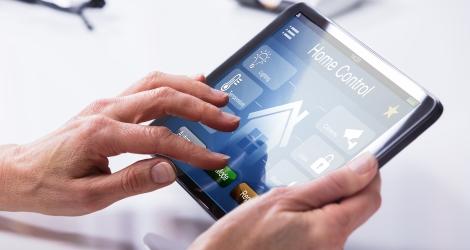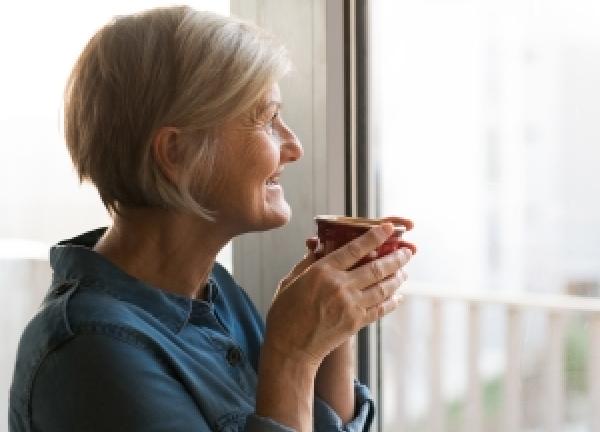A smart home? But for what purpose ?
Connected homes are widely acclaimed by those around the world who live in them. But the proliferation of tech devices that simplify our lives shouldn’t blind us to the most important goal, which is to take and retain control of the world around us.

Windows that open or close on their own, glass that becomes darker in response to light levels or becomes completely opaque at the flick of a switch, lights you can control from a smartphone, automated bathroom heating that knows when you take a shower, acoustic pollution sensors, indoor air quality control systems, automated temperature balancing for greater thermal comfort... And then there are the voice-activated personal assistants like Google Home and Amazon Echo that respond obediently to your slightest request.
Make no mistake, it's a fact: our homes are getting smart! And in overall terms, these systems benefit many areas of our lives in terms of energy efficiency, home maintenance, air quality control, intrusion and fire detection, teleworking, help for those people dependent on care, the automation of housework and how we use our leisure time.
“If we want to identify the real-life challenges of the connected home, we must always begin with the needs expressed by those who live there."
The connected home: some impressive numbers
Research & Markets, the world’s largest research store, expects the global home automation market to deliver year-on-year growth of 16.5% by 2025, when it will be generating revenues of $144 billion (€130 billion). Looking more specifically at Europe, the Swedish research firm Berg Insight values the market for smart home systems in 2018 as €12.9 billion, and forecasts that it will increase to €36.8 billion in 2023, driven by average year-on-year growth of 23.4%. A total of 644 million items of home automation technology were supplied in 2018, according to IDC. Their forecast suggests that that number will be 1.3 billion by 2022. So it’s pretty clear that this is a very fast growing sector.
Avoiding any technological determinism
Against this background of widespread enthusiasm, it is nevertheless perfectly legitimate to ask ourselves questions about just how useful this domestic technology arms race is. According to Patrice Barbel, the University of Rennes 1 lecturer and researcher who leads the ICT Engineering (Information and Communication Technology) eco-engineering Master’s program at the university’s ISTIC (Higher Institute of Information and Communication Technologies), any technological determinism must be avoided absolutely.
“If we want to identify the real-life challenges of the connected home, we must always begin with the needs expressed by those who live there. And in my opinion, the majority of those expressed today relate to the energy transition and home care for the elderly by combining comfort with security,” he explains.
Energy efficiency: taking control

So how do you go about designing smart home tools that are truly useful to those who use them? Patrice Barbel believes that it’s all about outcomes. This means - for example - building indicators that monitor the home energy consumption and implementing effective processes to lower that consumption. “Technologies must focus on providing the ability to measure these parameters in the home. The primary goal here is to give residents the resources they need to understand the processes going on around them. If you don't measure, you can't understand and therefore you can't take meaningful action,” he continues, adding: “It's not the home that's smart. It’s the way those who live in the home and how they interact with it that make the difference. It’s people’s understanding of the way they live that’s most important. The energy consumption of the home is by definition invisible, except when the half-yearly bill arrives. So we must make visible what is otherwise invisible. The challenge is all about taking control.”
Home care and energy efficiency: the same battle
Motion sensors, activity wristbands, remote alarms, assistance robots... New connected healthcare technologies also open up a very wide range of possibilities around home care for the elderly.
“Making it easier for the elderly and/or care-dependent to remain in their own home also makes life easier for the professional careers who visit them and give them practical help. The technologies needed to transmit the required information to everyone involved exist, but we also need to build interaction models that allow elderly people to retain control of their living environment, because in many ways autonomy is inextricably linked to control,” summarizes Patrice Barbel. This can involve designing ‘real-life scenarios’, thought out for and by residents and tailored precisely to their needs and habits. For example, automatically opening the shutters every morning, putting on the heating in the bathroom at the usual time or using a single button to turn the lights on or off when getting up in the morning or going to bed at night, for example. But such solutions also include motion detectors and automatic lighting systems to reduce the risk of falling or a remote control so that the front door can be opened without having to walk to it. Whatever the application, the idea is to adapt the home to the individual who lives in it. And not the other way around.
Ultimately, this is undoubtedly what makes smart homes truly relevant and interesting: it is certainly true to say that there are homes that can manage themselves autonomously, are capable of optimizing their energy expenditure and are packed with innovations, but there are above all homes that give their residents the most important power of all: knowledge.
Credits : HQuality / Shutterstock; Andrey_Popovy / Shutterstock
The last stories
All stories
View more


